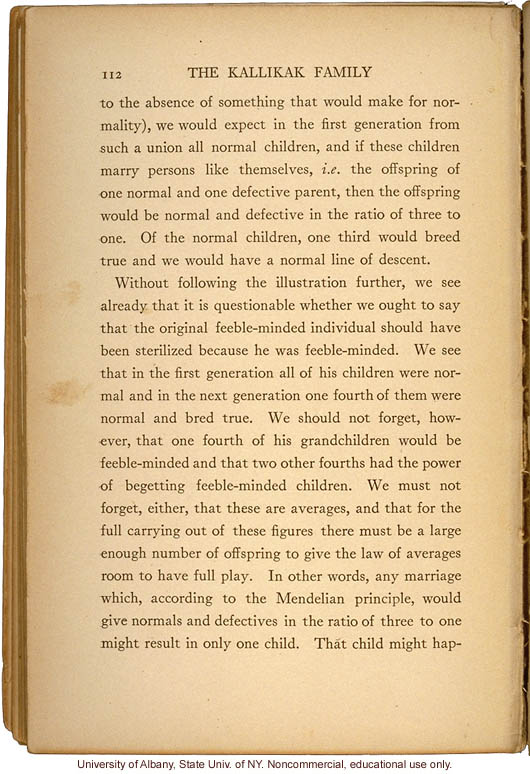112 The Kallikak Family
to the absence of something that would make for normality), we would expect in the first generation from such a union all normal children, and if these children marry persons like themselves, i.e. the offspring of one normal and one defective parent, then the offspring would be normal and defective in the same ratio of three to one. Of the normal children, one third would breed true and we would have a normal line of descent.
Without following the illustration further, we see already that it is questionable whether we ought to say that the original feeble-minded individual should have been sterilized because he was feeble-minded. We see that in the first generation all of his children were normal and in the next generation one fourth of them were normal and bred true. We should not forget, however, that one fourth of his grandchildren would be feeble-minded and that two other fourth had the power of begetting feeble-minded children. We must not forget, either, that these are averages, and that for the full carrying out of these figures there must be a large enough number of offspring to give the law of averages room to have full play. In other words, any marriage which, according to the Mendelian principle, would give normals and defectives in the ratio of three to one might result in only one child. That child might hap-
[end]


